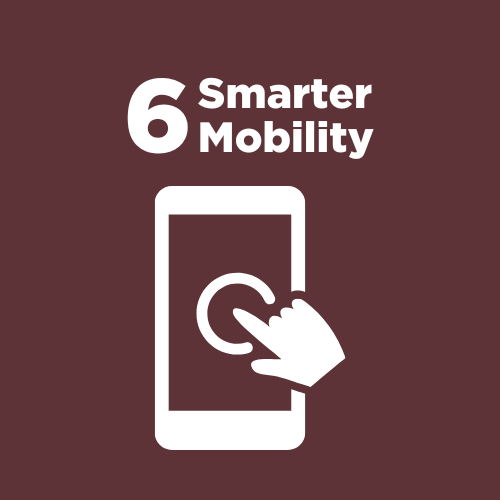Acceptability and awareness of passengers in utilizing e-vehicles and its impact to the environment and economic sectors;
Registration: 24 Sep 2022 to 31 Oct 2022Submission: 25 Oct 2022 to 31 Oct 2022
Participanting Teams: 6
Submissions: 1
LGU: Cauayan City
Themes: Regional OrganizationsBusiness and Civil SocietyClimate ChangeSustainable InfrastructureFood and SecurityEducation and Occupational Immobility
Categories: Smarter Mobility
Login to join challenge

The transport sector plays a vital role in supporting the daily activities of the people in terms of businesses, education, attracting investors, delivery of government services, and even in pursuing regional organizations. Recently, there are digital mechanisms employed to support the organization and help cities manage the entrance and exit of vehicles within their jurisdiction. When such changes were introduced, several vehicles were recalibrated and with the government, e-vehicles were introduced to uphold a more sustainable way of transporting people. Thus, there is a challenge in consolidating support from the people and its impact on the environment and economic sectors.
The challenge to gather the sentiments of the people in terms of its acceptability and the level of awareness people may possess is a priority identified by the LGU that needs to be addressed to push forward a more sustainable transporting mechanism. Through this Hackathon, a digital platform is expected to be developed and derived for actionable solutions to support the transition in the transport sector. Thus, a good pitch for innovation is a good way to streamline its coverage and direction to impact communities.
The following use-case statements are your guide to help you align your intention in addressing areas of this challenge:
a. How data analytics be used to engage rewards and spread awareness in the regional organization when utilizing e-vehicles?
b. How are Data Science models be used to predict future gains, and advantages in disseminating awareness of utilizing e-vehicles to consolidate regional acceptance?
c. How can data and technology be used in encouraging people to utilize e-vehicles for sustainable transport?
d. How can data and technology encourage farmers to transport their perishable goods without any threat of spoilage and quality loss?
e. How can data and technology help the City of Cauayan organize highways from traffic congestion by employing e-vehicles?
f. How can data and technology encourage public utility vehicles to upgrade to e-vehicles for sustainable livelihood?
g. How can data and technology encourage people to make use of e-vehicles to uphold environmental consciousness?
h. How can data and technology help the LGU of Cuayan encourage investors that e-vehicles are feasible in the city?
i. How can data and technology calibrate e-vehicles as a safe means of transport?
j. How can data and technology help the city in controlling the adverse effect of carbon emission by employing e-vehicles?
k. How can data analytics establish transport affordability among locals when riding via e-vehicles?
The challenge to gather the sentiments of the people in terms of its acceptability and the level of awareness people may possess is a priority identified by the LGU that needs to be addressed to push forward a more sustainable transporting mechanism. Through this Hackathon, a digital platform is expected to be developed and derived for actionable solutions to support the transition in the transport sector. Thus, a good pitch for innovation is a good way to streamline its coverage and direction to impact communities.
The following use-case statements are your guide to help you align your intention in addressing areas of this challenge:
a. How data analytics be used to engage rewards and spread awareness in the regional organization when utilizing e-vehicles?
b. How are Data Science models be used to predict future gains, and advantages in disseminating awareness of utilizing e-vehicles to consolidate regional acceptance?
c. How can data and technology be used in encouraging people to utilize e-vehicles for sustainable transport?
d. How can data and technology encourage farmers to transport their perishable goods without any threat of spoilage and quality loss?
e. How can data and technology help the City of Cauayan organize highways from traffic congestion by employing e-vehicles?
f. How can data and technology encourage public utility vehicles to upgrade to e-vehicles for sustainable livelihood?
g. How can data and technology encourage people to make use of e-vehicles to uphold environmental consciousness?
h. How can data and technology help the LGU of Cuayan encourage investors that e-vehicles are feasible in the city?
i. How can data and technology calibrate e-vehicles as a safe means of transport?
j. How can data and technology help the city in controlling the adverse effect of carbon emission by employing e-vehicles?
k. How can data analytics establish transport affordability among locals when riding via e-vehicles?